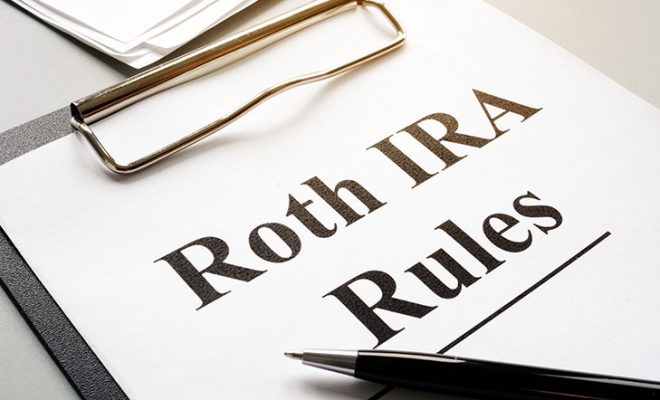Adjustments to Make to Your 401(k) When You Reach $1 Million or More

Reaching $1 million in your 401(k) is a significant milestone, and recent data shows more Americans are achieving it. Based on Fidelity’s latest report, the number of 401(k) accounts with a balance of $1 million or more surged to 485,000 by the end of the first quarter of 2024, representing a 15% increase from the 422,000 accounts recorded at the end of 2023. Despite this growth, these million-dollar accounts still make up only a small percentage of all 401(k) holders.
While more people should strive to reach the mark, an important question arises for those who have reached this milestone: Is 1 million enough to retire? Whether $1 million is enough depends on various factors, from inflation to healthcare costs and it is important to be mindful of them in your investment journey. Consider consulting with a financial advisor who can recommend suitable adjustments to your million-dollar 401k account to preserve and grow your funds.
This article explores important strategies and essential adjustments to consider as you reach the $1 million milestone in your 401k retirement account.
Below are certain adjustments that can be made to your 401(k) when you reach $1 million or more:
1. Rebalance your investment portfolio
Accumulating $1 million in 401(k) can mark the phase in your investment journey where your investment strategy should change to reflect your risk tolerance and income needs. One of the most critical adjustments to make at this juncture is rebalancing your portfolio. While younger investors typically allocate more to stocks to maximize growth potential, retirement is the time to shift toward a more conservative mix.
As a general rule, reducing exposure to stocks and increasing your allocation to bonds or other lower-risk investments can help safeguard your savings. Bonds provide more stability, as they’re less volatile compared to stocks, and can offer a reliable income stream through interest payments. Dividend-paying stocks can also be a smart option, as they provide regular income while maintaining some growth potential.
The key is finding a balance that protects your wealth without sacrificing too much growth. A common approach is a 60/40 or 50/50 stock-bond allocation, but this can be adjusted based on your comfort with risk.
If you’re unsure how to rebalance your portfolio, you can also consult with a financial advisor to ensure that your allocation aligns with your retirement goals and timeline
2. Consider Roth IRA conversion
If you’re wondering, if you can retire with 1 million in 401(k), it is possible that you may not have accounted for the impact of taxes on your funds. Managing taxes is just as important as managing investments for those nearing retirement. This is where a Roth IRA conversion can be highly beneficial and prevent your savings from going toward taxes in retirement.
With a traditional 401(k), your retirement withdrawals are taxed as ordinary income. Converting some of your 401(k) into a Roth IRA allows you to pay taxes on that money now, locking in today’s rates, and enabling you to withdraw tax-free later. This can be particularly advantageous if you expect tax rates to rise in the future or if your retirement income puts you in a higher tax bracket.
Roth IRAs also don’t have required minimum distributions (RMDs), which gives you more control over your withdrawals and helps preserve your wealth for future years. A gradual Roth conversion strategy, where you convert a portion of your 401(k) each year, can help manage the tax burden and make the most of the long-term tax benefits.
It is, however, important to remember that Roth conversions can trigger higher taxes if not done carefully. While for those with $1 million or more in their 401(k), it’s a strategy worth considering for long-term tax efficiency and retirement flexibility. A tax advisor can help navigate a Roth IRA conversion and the ensuing tax implications with ease.
3. Reassess your retirement timeline
Hitting the $1 million mark in your 401(k) doesn’t automatically mean it’s time to retire. Whether $1 million is enough to retire depends on several factors, such as your spending habits, location, and lifestyle expectations. For some, $1 million may be sufficient, while others might find it limiting, especially when considering inflation, healthcare costs, and potential longevity.
One key decision is whether to retire early or continue working, either full-time or part-time. Working longer, even if it’s in a part-time capacity, allows you to keep saving, delay withdrawals, and maximize Social Security benefits. Waiting until full retirement age or longer can significantly increase your monthly Social Security payouts.
In addition to Social Security, consider other income streams like pensions, rental income, or part-time consulting. These additional sources of income can help extend the life of your 401(k) savings, making $1 million stretch further. It’s crucial to assess your income options carefully and map out a retirement timeline that reflects your financial goals and lifestyle needs.
SPONSORED WISERADVISOR
4. Plan for healthcare expenses
Healthcare is one of the largest and most unpredictable expenses in retirement. Even with $1 million in your 401(k), rising healthcare costs can quickly deplete your savings if you’re unprepared. According to Fidelity, an average retired couple may need upwards of $300,000 to cover healthcare expenses alone. Planning for these costs early can help protect your 401(k) from being drained by unexpected medical bills.
One option to consider is opening a Health Savings Account (HSA), which allows you to save money tax-free to cover qualified medical expenses. HSAs offer a triple tax advantage: contributions are tax-deductible, growth is tax-free, and qualified withdrawals for medical expenses are tax-free as well. While HSAs are only available to those with high-deductible health plans (HDHPs), they can be an excellent tool for managing future healthcare costs, especially if you start contributing well before retirement.
Additionally, planning for long-term care either through insurance or personal savings should be part of your overall strategy. Long-term care insurance can help cover the costs of assisted living, nursing homes, or in-home care, offering another layer of protection for your retirement savings.
5. Adjust based on your estate planning needs and taxes
It is important to revisit your estate plan if you have accumulated $1 million in your 401(k) account. Apart from just passing your estate to heirs, estate planning also involves minimizing taxes, avoiding probate, and ensuring your wishes are carried out.
Start by updating your will, trusts, and beneficiaries. Make sure your 401(k) and other retirement accounts list the correct beneficiaries. Regularly reviewing and updating these documents can prevent complications for your loved ones later.
Additionally, staying informed about tax law changes is critical, as they can impact your retirement strategy. For example, the SECURE Act changed the way inherited retirement accounts are handled, requiring non-spouse beneficiaries to withdraw all funds within 10 years. Awareness of these changes can allow you to adjust your plans accordingly, ensuring you’re not caught off guard by new tax implications.
If your estate surpasses certain thresholds, you may consider estate tax planning. This might include gifting strategies or setting up trusts to reduce the taxable portion of your estate and ensure that more of your wealth goes to your heirs. A financial advisor can help you navigate these complex rules and make informed decisions about your estate.
6. Rethink your withdrawal strategy
When you reach $1 million in your 401(k) and enter retirement, the focus shifts from growing to preserving your savings. One of the most widely recommended withdrawal strategies is the 4% rule, which suggests withdrawing 4% of your retirement savings in the first year and adjusting for inflation in subsequent years. For example, with $1 million in your 401(k), you would withdraw $40,000 in the first year and then increase that amount based on inflation in the following years.
However, the 4% rule is not one-size-fits-all. It was developed under certain market conditions and might not hold up in every economic climate, therefore, it’s essential to be flexible with your withdrawal strategy. If markets underperform or you experience significant losses in your portfolio, it may be wise to reduce withdrawals temporarily to prevent depleting your savings too quickly. On the other hand, if your investments are performing well, you could afford to withdraw a bit more.
Flexibility is key here. Monitor your portfolio’s performance regularly and adjust withdrawals based on current market conditions and your financial needs. A rigid withdrawal strategy may leave you vulnerable to market downturns, but a dynamic approach can help ensure your $1 million lasts throughout your retirement.
To conclude
Reaching $1 million in 401(k) is a commendable achievement, but how you manage those funds moving forward will determine your long-term financial security. It is important to be wary of being complacent and making informed decisions to ensure your 401(k) sustains your retirement and maximizes the value of every dollar.
Use the free advisor match tool to get matched with seasoned financial advisors who can help make informed decisions and adjust your retirement strategy to preserve and grow your million-dollar 401(k).
For further information on creating a suitable retirement plan for your unique financial requirements, visit Dash Investments or email me directly at dash@dashinvestments.com.
About Dash Investments
Dash Investments is privately owned by Jonathan Dash and is an independent investment advisory firm, managing private client accounts for individuals and families across America. As a Registered Investment Advisor (RIA) firm with the SEC, they are fiduciaries who put clients’ interests ahead of everything else.
Dash Investments offers a full range of investment advisory and financial services, which are tailored to each client’s unique needs providing institutional-caliber money management services that are based upon a solid, proven research approach. Additionally, each client receives comprehensive financial planning to ensure they are moving toward their financial goals.
CEO & Chief Investment Officer Jonathan Dash has been covered in major business publications such as Barron’s, The Wall Street Journal, and The New York Times as a leader in the investment industry with a track record of creating value for his firm’s clients.











